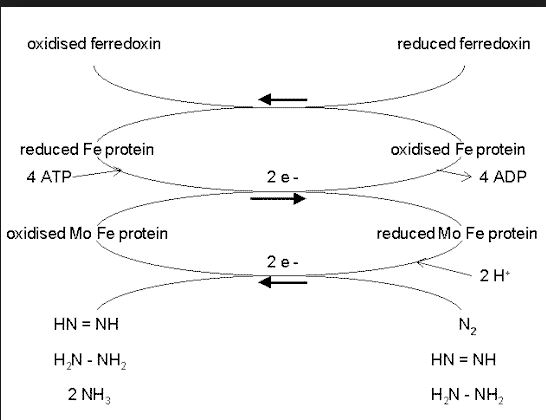Sandbox Reserved 991
From Proteopedia
| This Sandbox is Reserved from 20/01/2015, through 30/04/2016 for use in the course "CHM 463" taught by Mary Karpen at the Grand Valley State University. This reservation includes Sandbox Reserved 987 through Sandbox Reserved 996. |
To get started:
More help: Help:Editing |
|
This is a default text for your page '. Click above on edit this page' to modify. Be careful with the < and > signs. You may include any references to papers as in: the use of JSmol in Proteopedia [1] or to the article describing Jmol [2] to the rescue.
Contents |
Introduction
Lanosterol synthase is an enzyme found in the cholesterol biosynthesis pathway. It catalyzes the cyclization of the linear hydrocarbon, 2,3-Oxidosqualene to the four ringed . Lanosterol is a crucial precursor to cholesterol.
The gene coding for lanosterol synthase is found on chromosome 21: q22.3.
Since lanosterol synthase is involved in cholesterol biosynthesis, there is clinical relevance in using lanosterol synthase inhibitors to develop cholesterol lowering drugs. These drugs could then potentially be used in conjunction with statins.
Function
The enzyme lanosterol synthase carries out the most complex reaction of cholesterol synthesis. It takes a lengthy skinny carbon chain, 2,3-oxidosqualene, and folds it to create the cyclic lanosterol composed of four connected rings.
Cholesterol Biosynthesis
Cholesterol biosynthesis diverges from other biochemical processes using Acetyl-CoA, in the form of acetate. Acetate molecules, containing two carbons each, are condensed to form five-carbon isoprene units. These isoprene units then affix to generate a long 30 carbon molecule called squalene. Squalene will undergo an epoxidation reaction to form 2,3-oxidosqualene, the substrate for lanosterol synthase. Lanosterol continues in a 19-step pathway to become cholesterol.
Mechanism
Lanosterol cyclase catalyzes the conversion of 2,3 oxidosqualene to lanosterol. Overall, this reaction forms 4 rings, 4 carbon-carbon bonds and 5 chiral centers in a single step. Mutagenic analysis has determined that the three most important residues for function are .[3] The opening of the epoxide ring of 2,3-oxidosqualene requires protonation by the enzyme. The proton donor is the aspartic acid residue . The protonation of the oxygen causes the epoxide ring to open, forming a carbocation at postion C. The proton is removed from C9 and is accepted by the histidine residue .
Structure
Lanosterol synthase is a peripheral membrane protein that consists of 732 amino acids and operates as a single subunit. It has three sets of and 25 . 50% of the residues are found in helices and 5% are found in beta sheets. The residue sequence is 36-40% identical to evolutionary ancestors in plants and yeast. [4] The hydrophobic and membrane portion of the protein is bound to in the structure shown above. BOG detergent is used experimentally to isolate the protein from the membrane. [5]
Disease
Lanosterol Synthase Inhibitors as Cholesterol Lowering Drugs: There has been increased awareness surrounding the use of lanosterol synthase inhibitors as drugs to reduce LDL (low-density lipoproteins) to aid in the treatment of atherosclerosis. The commonly prescribed statin drugs currently used to lower LDL (bad blood cholesterol) while less effectively increasing HDL (high-density lipoproteins), a good blood cholesterol, function by inhibiting the activity of HMG-CoA reductase. Since the lanosterol synthase enzyme catalyzes the creation of precursors upstream of cholesterol, statins could adversely affect the levels of intermediates essential for other biosynthesis pathways. So due to lanosterol synthase having a stronger association to cholesterol biosynthesis than HMG-CoA reductase, it can be considered a useful drug target.
Scientific publishings in which lanosterol synthase is inhibited in varying degrees have demonstrated a direct decline in both lanosterol development and HMG-CoA reductase activity.
Structural highlights
This is a sample scene created with SAT to by Group, and another to make of the protein. You can make your own scenes on SAT starting from scratch or loading and editing one of these sample scenes.
References
- ↑ Hanson, R. M., Prilusky, J., Renjian, Z., Nakane, T. and Sussman, J. L. (2013), JSmol and the Next-Generation Web-Based Representation of 3D Molecular Structure as Applied to Proteopedia. Isr. J. Chem., 53:207-216. doi:http://dx.doi.org/10.1002/ijch.201300024
- ↑ Herraez A. Biomolecules in the computer: Jmol to the rescue. Biochem Mol Biol Educ. 2006 Jul;34(4):255-61. doi: 10.1002/bmb.2006.494034042644. PMID:21638687 doi:10.1002/bmb.2006.494034042644
- ↑ Corey EJ, Cheng CH, Baker CH, Matsuda SPT, Li D, Song X (February 1997). "Studies on the Substrate Binding Segments and Catalytic Action of Lanosterol Synthase. Affinity Labeling with Carbocations Derived from Mechanism-Based Analogs of 2, 3-Oxidosqualene and Site-Directed Mutagenesis Probes". J. Am. Chem. Soc. 119 (6): 1289–96.
- ↑ Baker, C. H., Matsuda, S. P., Liu, D. R., & Corey, E. J. (1995, August 4). Molecular cloning of the human gene encoding lanosterol synthase from a liver cDNA library. Biochemical and Biophysical Research Communications, 213(1), 154-160. Retrieved February 24, 2015, from PubMed (7639730)
- ↑ Thoma, R., Schulz-Gasch, T., D'Arcy, B., Benz, J., Aebi, J., Dehmlow, H., & Hennig, M. (2004, November 4). Insight into steroid scaffold formation from the structure of human oxidosqualene cyclase. Nature, 432(7013). doi:10.1038/nature02993

